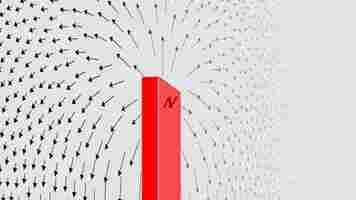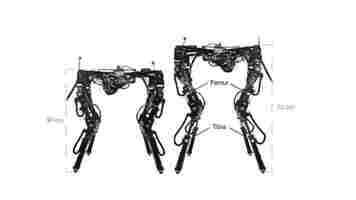Why the Pentagon’s probably drooling over the upcoming Age of Empires 4 launch
Did you know Neural is taking the stage this fall ? Together with an amazing line-up of experts, we will explore the future of AI during TNW Conference 2021. Secure your online ticket now !

Microsoft, a company with numerous military contracts, has brazenly admitted it intends to train an artificial intelligence agent to become “unbeatable” by humans in war simulations.
Feel free to run amok in a fugue state of panic at your own discretion, but I should point out it’s for a video game.
Of course, that doesn’t really make it any less scary.
Up front: an upcoming real-time strategy game titled Age of Empires 4 is set to release on Xbox Game Pass at the end of October. It’s being developed by Relic and published by Xbox Game Studios.
Kotaku’s Alex Walker recently interviewed Microsoft Studios’ creative director, Adam Isgreen, to discuss the game’s AI. Per Walker’s article:
Background: Isgreen’s careful to point out that Age 4 uses “machine learning” to train its “AI.” In this case, they mean they use machine learning to train the game’s computer opponent.
If you’ve never played any of the Age of Empires games, they’re a bit like boardless board games you can play with other people or against a simulated opponent controlled by the game’s logic.
What’s interesting here: we have to trace a few threads, and ultimately it might sound like a conspiracy theory, but this could have some very real implications for military AI.
Microsoft has several military AI contracts , but the competition remains stiff. Amazon‘s in position to bid on just about anything it can, and Google‘s bound to reenter the scuffle as soon as it’s able to get all of its paperwork in order .
Each of those companies has billions of dollars at their disposal, cutting-edge hardware, and laboratories filled with some of the brightest minds and most talented developers on the planet. And, arguably, that makes it difficult to choose between them.
The launch of Age of Empires 4 could signify the rumblings of a new era that slowly tilts the scale in Microsoft’s favor.
Let’s look at it from the point of view of an AI researcher to understand how.
Say you’re trying to teach an urban combat robot how to sweep and clear a city block. You’ll probably run millions of iterations in a simulated environment. And then, once you were confident your model could handle the basics, you’d likely start training it against experts.
[Related: Oh great, now scientists are teaching AI how to evade pursuit ]
Unfortunately, the vast majority of human combatants throughout history have been neither machines nor warfare experts. They’re regular people. And there’s an incredible amount of value in being able to train an AI warfare model against the machinations of regular people – as long as you can do it at a large enough scale to matter.
And, despite Google and Amazon‘s best efforts, Microsoft is the only big tech company in serious contention for military AI projects that can, at least hypothetically, offer the potential to test out combat AI in simulated warfare environments against tens of millions of humans who’ll pay for the privilege.
Quick take: we’re not saying Microsoft is actually using Age of Empires 4 to test out military AI. But it certainly stands as an interesting test of the concept.
There’s nothing that we’re aware of, legally speaking, that would prevent Microsoft from sharing data between divisions.
The question is, would it be ethical to offer gamers the opportunity to opt-in to a paradigm by which their gaming data could be exploited for military insights?
On the one hand, researchers dream of a paradigm where they can tap millions of humans to help them test an AI. Imagine if we could find a way to turn Madden, Halo, GTA, or Minecraft gameplay into a pipeline for advancing AI.
The implications would be like picturing the current state of AI research as a faucet with a drip and then imagining it as a fire hose open full-blast.
But, on the other hand: do gamers truly want to play such a giant role in the development of the Pentagon’s war machine?
It’s possible we’ll never have to answer questions like these. There’s no real reason to believe Microsoft’s secretly planning to use Xbox Game Pass as a training ground for advanced military AI.
But, honest question: is there any real reason to believe it isn’t?
Why can’t we find the mysterious ‘magnetic monopole’?
You’ve probably heard of the Higgs boson . This elusive particle was predicted to exist long ago and helped explain why the universe works the way it does, but it took decades for us to detect.

Well, there’s another elusive particle that has also been predicted by quantum physics, and it’s been missing for an even longer time. In fact, we still haven’t spotted one, and not through lack of trying.
It’s called the magnetic monopole, and it has a few unique properties that make it rather special.
Parallels
Those with an interest in physics are probably already familiar with an electric monopole, although you may know it by its more common name: electric charge.
Opposite electric charges attract and like charges repel through the interaction of electric fields, which are defined as running from positive to negative. These are the somewhat arbitrary labels for the two opposing electric charges.
Electric monopoles exist in the form of particles that have a positive or negative electric charge, such as protons or electrons.
At first glance, magnetism seems somewhat analogous to electricity, as there exists a magnetic field with a direction defined as running from north to south.
However, the analogy breaks down when we try to find the magnetic counterpart for the electric charge. While we can find electric monopoles in the form of charged particles, we have never observed magnetic monopoles.
Instead, magnets exist only in the form of dipoles with a north and a south end. When a bar magnet is split into two pieces, you don’t get a separate north part and a south part. Rather you get two new, smaller magnets, each with a north and south end.
Even if you split that magnet down into individual particles, you still get a magnetic dipole.
When we look at magnetism in the world, what we see is entirely consistent with Maxwell’s equations , which describe the unification of electric and magnetic field theory into classical electromagnetism.
They were first published by James Maxwell during 1861 and 1862 and are still used daily on a practical level in engineering, telecommunications, and medical applications, to name just a few.
But one of these equations – Gauss’s law for magnetism – states that there are no magnetic monopoles.
The magnetism we observe on a day-to-day basis can all be attributed to the movement of electric charges. When an electrically charged particle moves along a path, such as an electron moving down a wire, this is an electrical current. This induces a magnetic field that wraps around the direction of the current.
The second cause of magnetism involves a property from quantum mechanics called “spin”. This can be thought of in terms of an electrically charged particle rotating on an axis rather than moving in a particular direction.
This generates an angular momentum in the particle, causing the electron to act as a magnetic dipole (i a tiny bar magnet). This means we can describe magnetic phenomena without the need for magnetic monopoles.
But just because our classical electromagnetic theories are consistent with our observations, that does not imply that there are no magnetic monopoles. Rather, this just means that there are no magnetic monopoles anywhere that we have observed .
Once we start to delve into the murky depths of theory, we begin to find some tempting arguments for their presence in the universe.
The lure of duality
In 1894, Nobel Laureate Pierre Curie discussed the possibility of such an undiscovered particle and could find no reason to discount its existence.
Later, in 1931, Nobel Laureate Paul Dirac showed that when Maxwell’s equations are extended to include a magnetic monopole, electric charge can exist only in discrete values.
This “quantization” of electric charge is one of the requirements of quantum mechanics. So Dirac’s work went towards showing that classical electromagnetism and quantum electrodynamics were compatible theories in this sense.
Finally, there are few physicists who can resist the beauty of symmetry in nature. And because the existence of a magnetic monopole would imply a duality between electricity and magnetism, the theory suggesting magnetic monopoles becomes almost intoxicating.
Duality, in the physical sense, is when two different theories can be related in such a way that one system is analogous to the other.
If it were the case that the electric force was completely analogous to the magnetic force, then perhaps other forces would also be analogous to one another. Perhaps then there would be some way to relate the strong nuclear force to the weak nuclear force, paving the way to a grand unification of all physical forces.
Of course, just because a theory has an appealing symmetry doesn’t make it correct.
Monopole mirage
Scientists have come close to seeing magnetic monopoles by producing monopole-like structures in the lab using complex arrangements of magnetic fields in Bose-Einstein condensates and superfluids.
But, while these show that a magnetic monopole is not a physical impossibility, they are not the same as discovering one in nature.
Particle physics experiments have, on occasion, announced possible monopole candidates, but so far none of these discoveries have been shown to be irrefutable or reproducible.
The Monopole and Exotics Detector at the Large Hadron Collider ( MoEDAL ) has taken up the search but has found no monopoles to date.
As a result, magnetic monopole enthusiasts have turned their sights to explaining why we haven’t seen any monopoles.
If the current generation of particle accelerators has failed to detect a magnetic monopole, perhaps the mass of a monopole is simply greater than we are able to create at present.
Using theory, we can estimate the maximum possible mass for the magnetic monopole. Given what we already know about the structure of the universe, we can estimate that the monopole mass could be up to an enormous 10 14 TeV.
An object this massive may have been produced only in the very early stages of the universe after the Big Bang before cosmic inflation began. If the universe cooled to a point that monopole creation was no longer energetically possible before expanding, perhaps the monopoles are out there. Just few and far between. The trick is to find one.
Article by T’Mir Danger Julius , Data Scientist, Swinburne University of Technology
This article is republished from The Conversation under a Creative Commons license. Read the original article .
This shape-shifting robot adjusts its body to walk across all kinds of terrain
Imagine running on a cement footpath, and then suddenly through dry sand. Just to keep upright, you would have to slow down and change the way you run. In the same way, a walking robot would have to change its gait to handle different surfaces.

Generally, we humans and most robots can only change how we run. But what if we could also change the shape of our bodies to run as fast and safely as possible on any surface?
We would like to rely on robots for difficult and dangerous tasks, from inspecting failed nuclear reactors to space exploration. For these tasks, a static body could limit the robot’s adaptability. A shape-shifting body could make the difference between success and failure in these unexpected environments. Even better, a shape-shifting robot could learn the best body shape for different environments and adapt to new environments as it encounters them.
In collaboration with the University of Oslo, we have successfully tested this idea with a four-legged robot that adapts its body to walk on new surfaces as it sees them, performing better than a static-body robot. Our research is published in Nature Machine Intelligence.
A shape-shifting quadruped
DyRET, the Dynamic Robot for Embodied Testing, or “the animal” in the Norwegian of its creator, Tønnes Nygaard , was designed to explore the idea of a shape-shifting robot. Each of DyRET’s four legs has two telescopic sections, so that it can change the length of its thigh or shin bones. The adjustments are made by motors built into the legs and the lengths can be changed automatically while the robot is operating.
The motors can change the height of DyRET by around 20%, from 60cm to 73cm tall. That 13cm makes a dramatic difference to the robot’s walk. With short legs, DyRET is stable but slow, with a low center of gravity. In its tallest mode, DyRET is more unstable while it walks but its stride is much longer, allowing it to travel faster and to step over obstacles.
DyRET also has sensors to keep track of what it’s walking on. Each of DyRET’s feet has a force sensor that can feel how hard the ground is. A 3D camera points at the ground between DyRET’s front legs to estimate how rough the ground is.
Learning to adapt
When DyRET is walking, it continuously senses the environment through its feet and 3D camera. When the robot detects a change in ground conditions, it can change to the best leg length. But how does the robot know what body shape works best?
We explored two ways for DyRET to learn the best leg configuration for different situations: a controlled environment, indoors with known surfaces, and a real-world test outside.
In our controlled tests, DyRET walked inside boxes about 5 meters long containing different walking surfaces: sand, gravel, and hard fiber-cement sheeting. The robot walked on each material in each of 25 different leg configurations to record the efficiency of its movement. Given this data, we tested the robot’s ability to automatically sense a change in the walking surface within the boxes, and to choose the best body shape.
While our controlled experiments showed DyRET could adapt its body successfully to surfaces it had walked on before, the real world is a much more variable and unpredictable place. We showed this method could be extended to unseen terrain by estimating the best body-shape for any surface that the robot encounters.
In our outdoor experiments, DyRET used a machine learning model, seeded with knowledge about the best leg configuration for a given combination of terrain hardness and roughness taken from the controlled tests. As the robot walks, it continuously predicts the best body shape for the terrain as it encounters it, while updating its model with measurements of how well it can walk. In our experiments, DyRET’s predictions improve as it walks, allowing it to quickly generate efficient movements, even for terrain it hasn’t seen before.
Are shape-shifting robots the future?
DyRET explores the idea of “embodied cognition” in a robot: that is, that a robot’s hardware body can be used to solve problems in collaboration with its software brain by tightly linking them to the environment. Instead of DyRET’s body being a constraint on its movement, it is itself an adaptive way of solving problems in challenging environments.
This is incredibly beneficial, especially when we can’t predict the exact environmental conditions beforehand, which makes picking a single “good” robot shape very challenging. Instead, these robots would adapt to a wide variety of environmental conditions through shape-change.
Our proof of concept has powerful implications for the future of robotic design, unlocking currently impossible environments that are very challenging and variable. Future shape-shifting robots might be used on the seafloor, or for long-term missions in space.
This article by David Howard , Data61 , and Charles Martin , Australian National University is republished from The Conversation under a Creative Commons license. Read the original article .